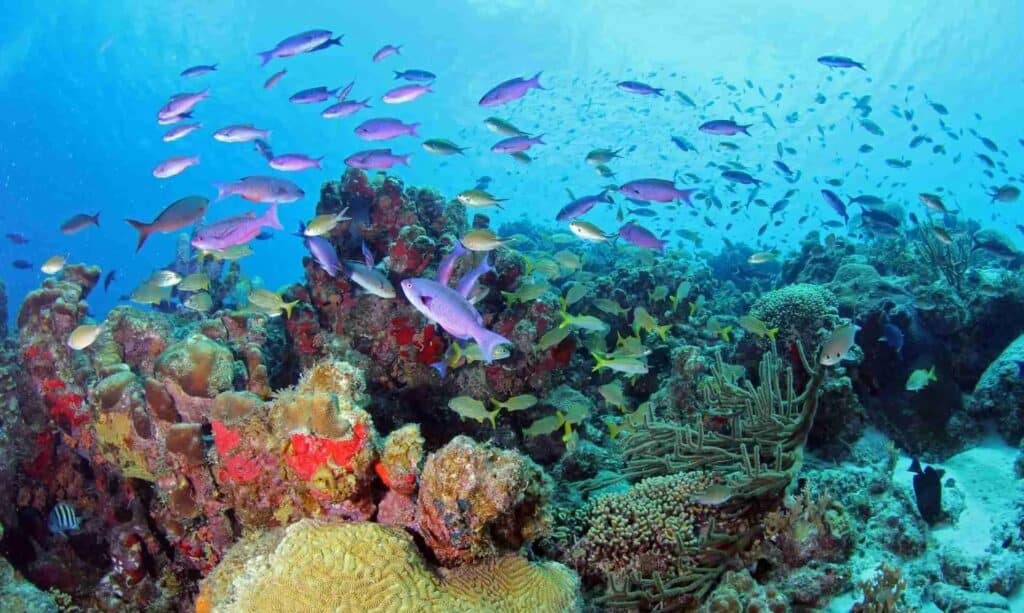
Do people speak English in Curaçao?
Do people speak English in Curaçao?
Are you wondering whether you’ll be able to communicate easily during your island vacation without knowing Dutch or Papiamentu?
What you need to know about language on the island
Yes, you can comfortably navigate Curaçao with English as your primary language. While the official languages are Dutch and Papiamentu, English is widely spoken throughout the island, especially in tourist areas, hotels, restaurants, and activity providers. Most staff at Hato International Airport, resorts, and popular destinations like Willemstad will communicate with you in English without any issues. The island’s position in the Caribbean region and its historical connections to both North America and the United States have made English a common language among locals working in tourism and hospitality.
The multilingual nature of Curaçao reflects its rich cultural heritage dating back to the 19th century and its status as part of the Dutch Caribbean. You’ll find that many residents speak four or more languages fluently, including English, Dutch, Papiamentu, and Spanish due to proximity to South America. When booking activities through platforms or visiting popular spots like Fort Amsterdam or crossing the Queen Juliana Bridge, you’ll discover that the language of staff is rarely a barrier. However, learning a few basic Papiamentu phrases like “bon dia” for good morning will earn you warm smiles and enhance your cultural experience on this welcoming island.

Luxury car rentals in Curaçao
Experience transparent pricing and exceptional service with Rent Car Curaçao. Choose from luxury vehicles elevate your Curaçao adventure.
Understanding the linguistic landscape of the island
As you plan your trip to this vibrant Caribbean Sea destination, understanding the language dynamics will help you feel more confident exploring everything from historic neighborhoods to remote beaches. The island’s linguistic diversity stems from centuries of cultural exchange and colonial influence that continues to shape daily interactions today.
The legacy of Dutch colonial presence
The island’s connection to the Netherlands began in the 17th century when the West India Company established control, creating a lasting impact on the official language structure. You’ll notice Dutch rule influences everywhere, from government signage to the architecture around Punta and Otrobanda. When Spanish explorer Alonso de Ojeda first encountered the indigenous Indios Curaçaos, he couldn’t have imagined the multilingual society that would develop. Historic sites like Fort Beekenburg and the impressive Fort Amsterdam complex showcase this colonial heritage, where tour guides comfortably switch between languages depending on visitor needs.
Papiamentu as the heartbeat of local culture
While you’ll manage fine with English, you’ll hear Papiamentu everywhere as the true language of local life. This Creole language developed during the slave trade era, blending Portuguese, Spanish, Dutch, and African languages into a unique communication system. In neighborhoods like Santa Ana and Tera Kora, locals predominantly speak Papiamentu among themselves. You might catch snippets of it at Campo Alegre or while exploring Jan Thiel beach areas. The language reflects the island’s position between South America and the broader Caribbean, with influences from nearby Venezuela’s Maracaibo Basin region adding Spanish vocabulary into everyday conversations.
English proficiency in tourism and hospitality sectors
Your accommodation experience will be seamless regarding language, as most establishments employ multilingual staff. Even pet-friendly hotels across the island ensure their teams communicate effectively with international guests. Restaurant menus throughout tourist zones appear in multiple languages, and activity booking platforms work entirely in English. The connection between Aruba Bonaire and Curaçao Curaçao as part of the Caribbean Netherlands means tourism standards include strong English communication expectations across all three islands.
Regional connections and language crossover
The island’s proximity to Venezuelan coastline means Spanish is commonly understood, particularly in commercial districts and border trade areas. This trilingual foundation makes the Dutch Caribbean unique compared to other Caribbean islands. You’ll find that taxi drivers, shop owners, and service providers near popular areas effortlessly switch languages mid-conversation. The cultural exchange with North America through tourism and business has reinforced English as a practical necessity rather than just an educational requirement for residents working in visitor-facing roles.
Practical communication tips for your visit
You won’t need a translation app for most situations, but downloading one adds convenience for reading local signs or market labels. When asking for directions or recommendations, speaking slowly and clearly in English works perfectly well. Most younger residents learn English in school and through media exposure, making generational differences less pronounced than you might expect. At museums, guided tours, and excursion bookings, English options are standard. Even in residential areas away from main tourist zones, you’ll find enough English speakers to help with basic needs, though attempting a few Papiamentu greetings shows cultural appreciation that locals genuinely value.
Do people speak English in Curaçao? - FAQ
What other languages might I encounter while exploring Curaçao?
Beyond English, Dutch, and Papiamentu, you’ll frequently hear Spanish throughout the island due to proximity to Venezuela and the Maracaibo Basin region. Many residents from South America have settled here, particularly in commercial districts and markets. The multilingual environment reflects centuries of cultural exchange dating back to when Alonso de Ojeda first encountered the indigenous Indios Curaçaos. This linguistic diversity enriches your cultural experience as you explore neighborhoods, dine at local restaurants, and interact with residents who often switch between four or more languages effortlessly during conversations.
Can I get by with only English at historical sites and museums?
Absolutely. Major historical attractions like Fort Amsterdam, Fort Beekenburg, and museum complexes offer guided tours and informational materials in English. These sites showcase the island’s colonial heritage from the West India Company era through Dutch rule to present day. Tour guides are multilingual and accustomed to international visitors. Even lesser-known neighborhoods like Santa Ana and Tera Kora have enough English-speaking residents to help with directions or recommendations. The tourism infrastructure throughout the Caribbean Netherlands ensures language accessibility at cultural and historical destinations.
How does the language situation compare to Aruba and Bonaire?
The three islands of Aruba Bonaire and Curaçao Curaçao share similar linguistic characteristics as part of the Dutch Caribbean. All three use Dutch as an official language alongside Papiamentu, with English widely spoken in tourism sectors. The Caribbean Netherlands designation means consistent language standards across islands, making travel between them linguistically seamless. Staff at Hato International Airport and inter-island ferry services communicate effectively in English. The shared heritage from the 19th century slave trade era created similar Creole language development across all three islands, though each has distinct local dialects and expressions.
Will I find English-speaking staff at accommodations outside tourist zones?
Yes, even pet-friendly hotels and guesthouses in residential areas employ staff with English proficiency. The language of staff at accommodations is rarely an issue regardless of location, as tourism training emphasizes multilingual communication. Properties near beaches like Jan Thiel or in quieter districts maintain the same service standards as those in Willemstad. Hotel and guesthouse owners understand that international guests need English communication for comfort and safety. From booking confirmations to local recommendations, you’ll find staff prepared to assist in English throughout your stay, whether you’re near the Queen Juliana Bridge or in more secluded island areas.
Are restaurant menus and food ordering easy in English?
Restaurant dining presents no language barriers in tourist areas or popular local spots. Menus typically appear in multiple languages, and servers communicate comfortably in English. From beachside eateries near Campo Alegre to upscale dining in historic districts, the language of staff accommodates international visitors. Even traditional local restaurants where Papiamentu dominates among locals will have someone who speaks English to explain dishes and take orders. The island’s connection to North America through tourism has made English proficiency standard in hospitality. Waitstaff can describe ingredients, preparation methods, and recommend dishes based on your preferences without communication difficulties.
Do taxi and transportation services operate in English?
Transportation services throughout the island function smoothly in English. Drivers at Hato International Airport and hotel pickup points communicate in English as standard practice. Whether arranging rides to beaches, historical sites, or shopping districts, you’ll find drivers understand destinations and can provide recommendations. The island’s position in the Caribbean region between North America and South America means transportation workers regularly serve international tourists. From airport transfers to day-trip arrangements, language barriers don’t exist in professional transportation services. Many drivers speak four languages and enjoy sharing local knowledge about Curaçao’s culture, history, and hidden gems during rides.
Will I need to know Dutch for any official paperwork or processes?
Official documents and government processes typically occur in Dutch, but tourist-related transactions don’t require Dutch knowledge. Immigration at Hato International Airport processes international visitors in English. Rental car agreements, hotel registrations, and activity bookings all accommodate English speakers. The influence of Dutch rule means government signage appears in Dutch, but tourist information centers provide English versions. For standard vacation activities, shopping, dining, and entertainment, Dutch proficiency isn’t necessary. If you encounter situations requiring official documentation, tourism offices and hotel concierges assist with translations or direct you to English-speaking representatives who handle visitor needs.
How did English become so prevalent on a Dutch island?
The widespread English usage stems from multiple factors beyond the Dutch Caribbean colonial structure. Geographic proximity to North America and the United States created strong economic and tourism ties requiring English proficiency. The island’s role in Caribbean region commerce and oil refining historically connected it to English-speaking business partners. Educational systems include English instruction, and American media exposure increases fluency among younger generations. Unlike isolated islands, Curaçao’s position between the Caribbean Sea and South America created a cosmopolitan environment where multiple languages became practical necessities for trade, tourism, and international relations throughout the 19th century and into modern times.
Are signs and directions posted in English throughout the island?
Major tourist areas, beaches, and attractions feature multilingual signage including English. Highway signs use internationally recognized symbols supplemented with Dutch text, making navigation straightforward. Popular destinations accessible via the Queen Juliana Bridge or main coastal roads have English directional markers. However, residential neighborhoods and some rural areas primarily use Dutch or Papiamentu signage. Mobile GPS applications work excellently for navigation regardless of sign language. Historical sites like Fort Amsterdam and Fort Beekenburg provide English informational plaques. The Caribbean Netherlands tourism infrastructure ensures English accessibility at major intersections, beaches, and cultural attractions where international visitors concentrate.
What are some useful Papiamentu phrases to enhance my experience?
Learning basic Papiamentu enriches cultural connections though English remains sufficient. Essential phrases include “bon dia” (good morning), “bon tardi” (good afternoon), “danki” (thank you), and “ayo” (goodbye). Locals appreciate attempts to use their language, especially in neighborhoods like Tera Kora and Santa Ana where Papiamentu dominates daily life. This Creole language developed during the slave trade era, blending Portuguese, Spanish, Dutch, and African influences into the island’s linguistic heartbeat. Even simple greetings create warmer interactions at markets, beaches, and local restaurants. While the language of staff in tourism remains English-focused, demonstrating cultural respect through Papiamentu phrases opens doors to authentic local experiences.
Discover the Wonders
of Klein Curaçao
Experience the untouched beauty of Klein Curaçao, a hidden paradise with stunning beaches and rich marine life. Perfect for snorkeling, diving, or simply relaxing in the sun.
Popular subjects
Luxury car rentals in Curaçao
Experience transparent pricing and exceptional service with Rent Car Curaçao. Choose from luxury vehicles elevate your Curaçao adventure.
Subscribe to our newletter
Discover the Wonders of Klein Curaçao
Experience the untouched beauty of Klein Curaçao, a hidden paradise with stunning beaches and rich marine life. Perfect for snorkeling, diving, or simply relaxing in the sun.





